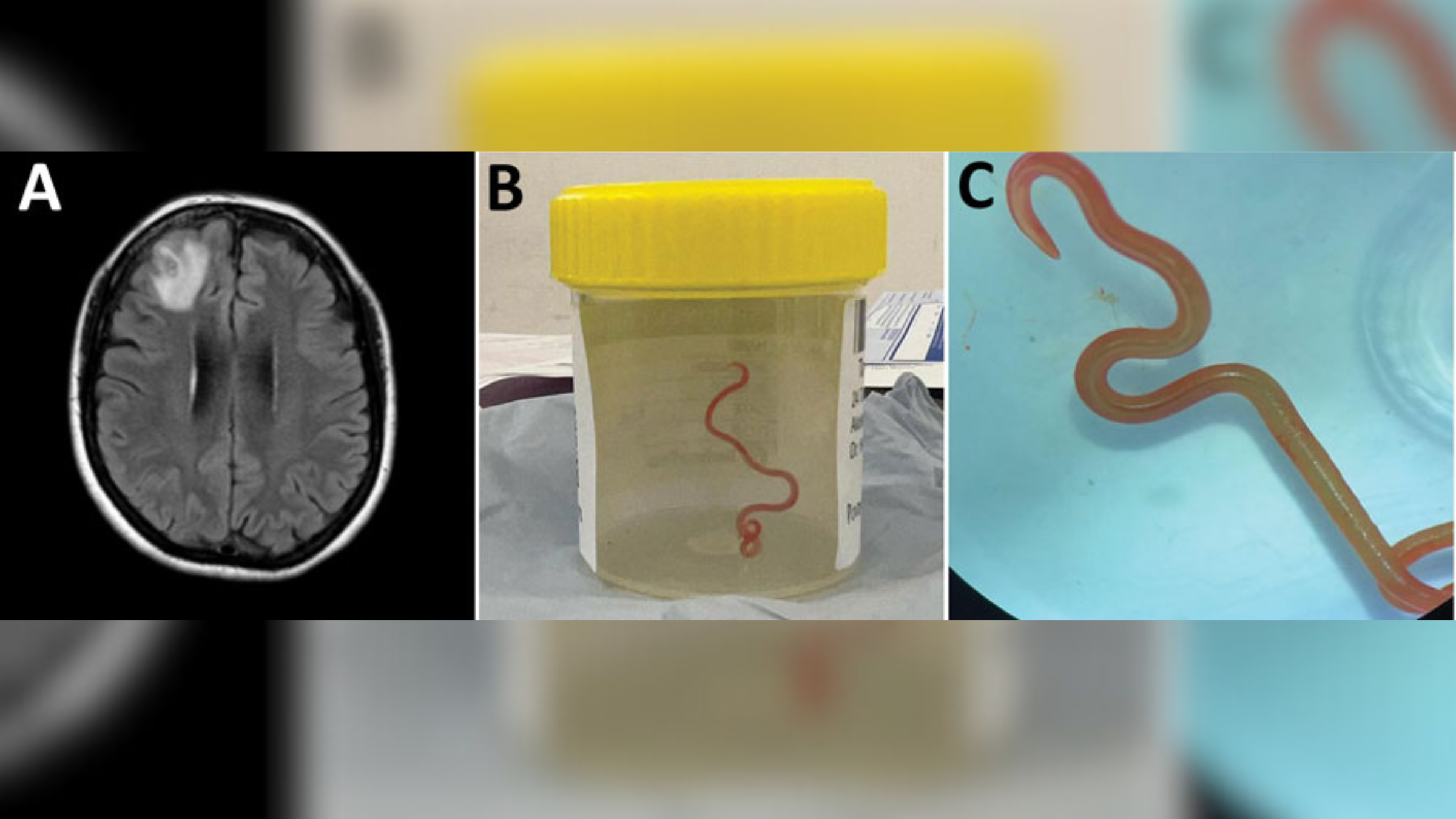
A woman in Australia has become the first known person in the world to be infected with a parasitic worm that normally lives in pythons — after doctors found it wriggling in her brain.
The 64-year-old, who lives in New South Wales, Australia, was initially hospitalized several times in 2021 for a variety of symptoms, including abdominal pain, diarrhea, fever and persistent cough. At the time, exams revealed injuries in her lungs, liver and spleen and a remarkably high number of immune cells in the blood.
She was put on immune-suppressing drugs for this rare blood disorder, but in 2022 she was hospitalized again after developing forgetfulness and worsening depression for three months. Doctors then took a brain scan and found injured tissue in the front right side of her brain.
Soon after, doctors performed a brain biopsy and extracted a live, 3.15 inch-long (8 centimeters) wriggling red worm from her brain belonging to a species called Ophidascaris robertsi, which has never been known to infect humans before.
"Neurosurgeons regularly deal with infections in the brain, but this was a once-in-a-career finding," Dr. Sanjaya Senanayake, a case report author and associate professor at the Australian National University, told The Guardian. "No one was expecting to find that."
Related: Rare 'brain-eating' amoeba infection behind death of 2-year-old in Nevada
O. robertsi is a type of parasitic roundworm that is native to Australia. Adult worms live in the eosphagus and stomach of carpet pythons (Morelia spilota) and shed their eggs in the snakes' feces. These eggs are then eaten by small mammals, and the hatched worms migrate to organs in the host critter's chest and stomach where they can grow to be around 3.15 inches (8 cm) long. When pythons then eat these animals, they become infected, and so the cycle continues.
According to the authors of the case report, published Aug. 11 in the journal Emerging Infectious Diseases, humans are considered "accidental hosts" as no one has ever been known to be infected with an Ophidascaris worm before. The woman had not been in direct contact with a snake, but she did live near a lake where carpet pythons dwell and often collected a native, leafy vegetable called warrigal greens (Tetragonia tetragonioides) that she used in her cooking.
"We hypothesized that she inadvertently consumed O. robertsi eggs either directly from the vegetation or indirectly by contamination of her hands or kitchen equipment," the case report authors wrote.
The presence of lesions in her lungs and liver suggested that the worm larvae had migrated to other organs in her body. The team hypothesized, though, that a larva likely made it to her brain — which has never even been seen in animals infected with Ophidascaris — because she was immunosuppressed.
Following her brain biopsy, the doctors prescribed the woman two types of antiparasitic drug — ivermectin for two days and albendazole for four weeks — to ensure that any larvae that may have migrated to other organs were killed. This was necessary because Ophidascaris larvae can live in animal hosts for years. They also took her off immunosuppressive drugs, and six months after surgery, her immune cell count was normal and her neurological symptoms had improved.
The woman's infection highlights the ongoing risk of zoonotic diseases, meaning diseases that jump from animals to humans, as humans and animals interact more closely, the case report authors concluded.
"This Ophidascaris infection does not transmit between people, so this patient’s case won't cause a pandemic like Covid-19 or Ebola," Senanayake told The Guardian. "However, the snake and parasite are found in other parts of the world, so it is likely that other cases will be recognised in coming years in other countries."







